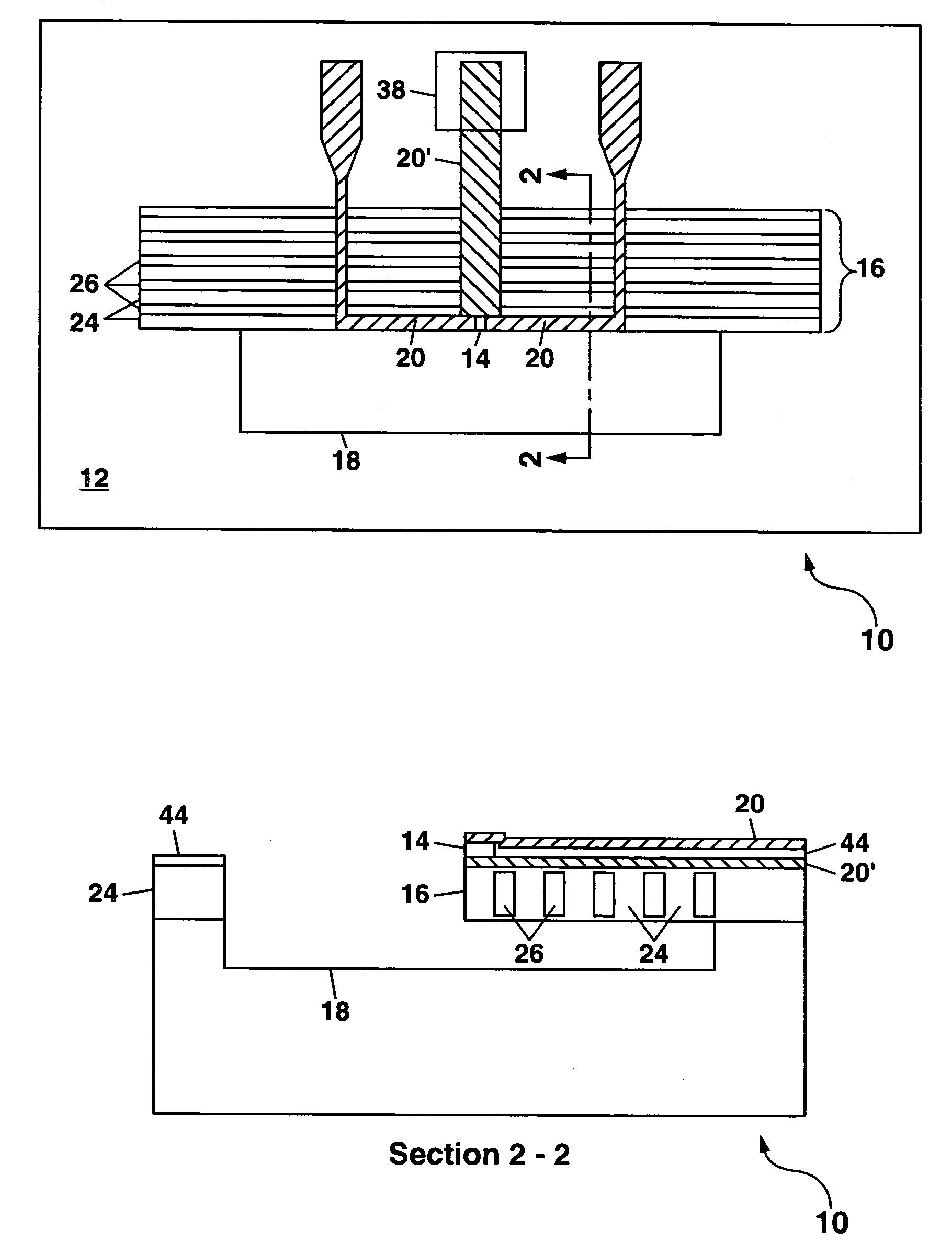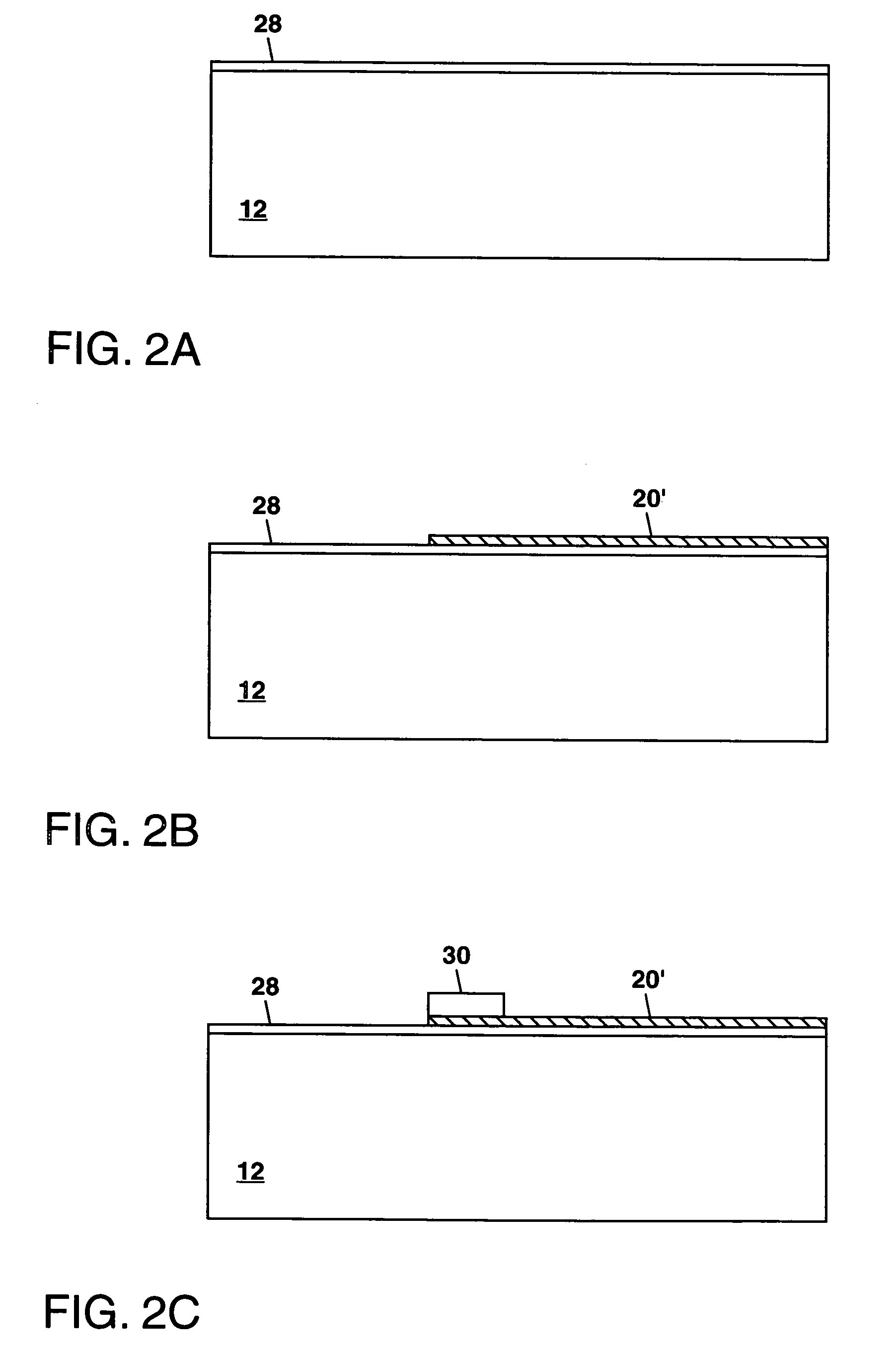Contour mode resonators with acoustic reflectors
a technology of acoustic reflectors and convex resonators, which is applied in piezoelectric/electrostrictive/magnetostrictive devices, electrostatic generators/motors, piezoelectric/electrostriction/magnetostriction machines, etc. it can solve the problems of tethers providing relatively poor heat sinking to the substrate, limiting the number of fbars, and limiting the number of resonators
- Summary
- Abstract
- Description
- Claims
- Application Information
AI Technical Summary
Benefits of technology
Problems solved by technology
Method used
Image
Examples
Embodiment Construction
[0026]Referring to FIGS. 1A and 1B, there is shown a schematic plan view and a schematic cross-section view, respectively, of a first example of a MEM resonator 10 formed according to the present invention. The MEM resonator 10 comprises a substrate 12 with an acoustic resonator 14 suspended thereon by an acoustic reflector 16. The acoustic resonator 14 and at least a part of the acoustic reflector 16 extend outward over a cavity 18 formed in the substrate 12, with the acoustic reflector 16 being formed as a cantilevered plate extending substantially parallel to the substrate 12 and having a thickness of up to a few microns (e.g. 1-5 μm). In this way, the acoustic resonator 14 can be acoustically isolated from the substrate 12 by the acoustic reflector 16 while still being thermally coupled to the substrate 12 through the acoustic reflector 16. Any heat generated within the acoustic resonator 14 by electrical actuation thereof can be dissipated through the acoustic reflector 16 to t...
PUM
 Login to View More
Login to View More Abstract
Description
Claims
Application Information
 Login to View More
Login to View More - R&D
- Intellectual Property
- Life Sciences
- Materials
- Tech Scout
- Unparalleled Data Quality
- Higher Quality Content
- 60% Fewer Hallucinations
Browse by: Latest US Patents, China's latest patents, Technical Efficacy Thesaurus, Application Domain, Technology Topic, Popular Technical Reports.
© 2025 PatSnap. All rights reserved.Legal|Privacy policy|Modern Slavery Act Transparency Statement|Sitemap|About US| Contact US: help@patsnap.com



